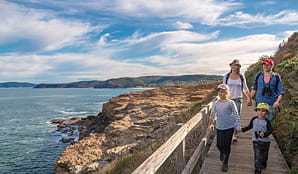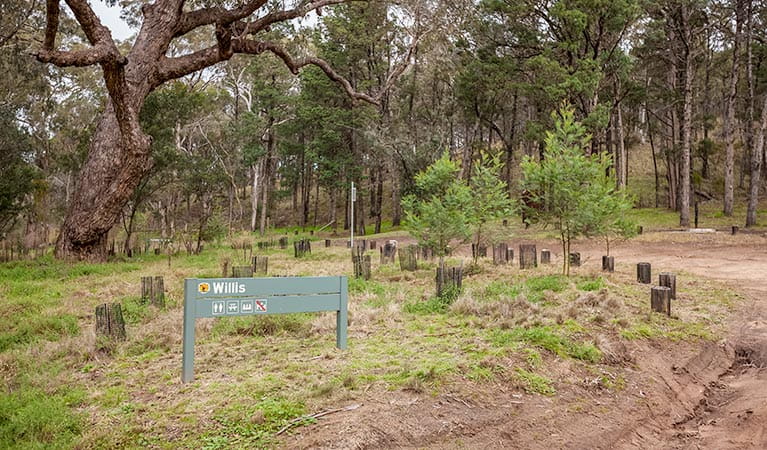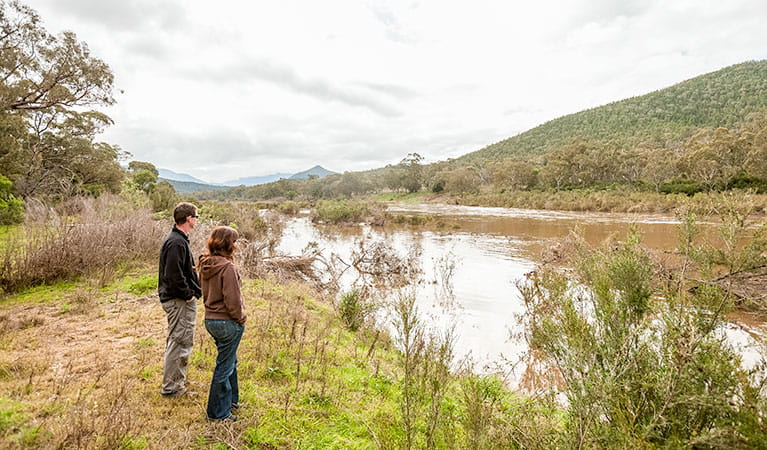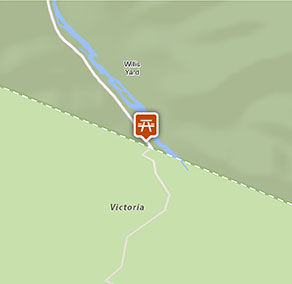Willis picnic area
Lower Snowy River area in Kosciuszko National Park
Overview
Willis picnic area is the last stop on Lower Snowy drive before it crosses the state border, and offers a scenic lunch spot with tables and fire rings.
- Type
- Picnic areas
- Accessibility
- Medium
- What to
bring - Drinking water, cooking water
- Please note
- We encourage you to bring gas or fuel stoves, especially in summer during the fire season.
- There is no mobile reception in this part of the park.
Willis picnic area, at the tail-end of Lower Snowy drive, offers one last place to settle down and rest on this side of the Black-Allen line (NSW/Victorian border). Snowy River roars past on the other side of Barry Way, and shady gum trees and cypress pines make this a pleasant option for morning or afternoon tea. Pack a thermos and find a perfect picnic spot – there are even fire rings if you want to stoke up a barbecue.
Kangaroos, wallabies and emus are likely to be seen during the day here, and you might even spot a platypus in the river, so don’t forget the camera. Wombats are more likely to be out at night.
The resident wattle trees bloom in late winter and spring, the best time to visit Willis picnic area. As the lowest altitude picnic area in Kosciuszko National Park, it can get quite warm in the height of summer – a perfect excuse to bring a pair of swimmers to cool down in the river.
Subscribe to Naturescapes
Subscribe to our Naturescapes e-newsletter which is packed with the latest information, experiences and events in NSW national parks. Your next park adventure starts here.

Conservation program:
Southern corroboree frog conservation project
An iconic endangered species, the southern corroboree frog, found only in Kosciuszko National Park, faces the grave threat of extinction. Saving Our Species aims to prevent this from happening by battling chytrid fungus, protecting frog habitat from pests, and fostering a captive breeding program.
General enquiries
- National Parks Contact Centre
- 7am to 7pm daily
- 1300 072 757 (13000 PARKS) for the cost of a local call within Australia excluding mobiles
- parks.info@environment.nsw.gov.au
Operated by
- Snowy Region Visitor Centre
- 8.30am to 5pm daily. Closed Christmas Day.
- 02 6450 5600
- srvc@environment.nsw.gov.au
- 49 Kosciuszko Road, Jindabyne NSW 2627
Park info
- in the Lower Snowy River area of Kosciuszko National Park in the Snowy Mountains region
The Lower Snowy River area is open all year, but some roads and trails may close due to weather conditions or park management issues.
-
No park entry fees apply in the Lower Snowy River area. See vehicle entry fees for other areas in Kosciuszko National Park.
Buy annual pass


